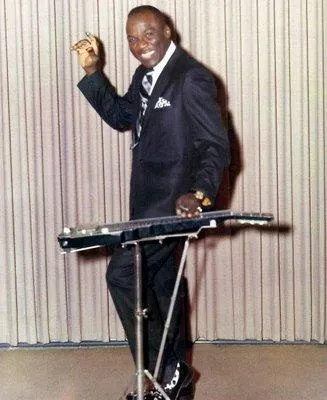Lonnie Farris
(1924 - 1988)
Reverend Lonnie Farris: Sacred Steel Innovator and Gospel Visionary
Early Life and Musical Career Born in June 1924 in Charlotte, North Carolina, Reverend Lonnie Farris was a charismatic and highly influential steel guitar performer. His mastery of the Hawaiian steel guitar exemplified the resilience and adaptability of gospel music, earning him recognition as a leading figure in the sacred steel tradition.
Recording Legacy and Musical Style
Between 1962 and 1964, Farris released 16 songs under his own name, showcasing a remarkably eclectic approach that drew from a wide range of musical influences. His recordings featured vibrant saxophone solos, syncopated washboard percussion, and soulful vocalists, weaving diverse sounds into a cohesive gospel framework. At the heart of his music was his exceptional steel guitar technique, which seamlessly transitioned between silky smooth melodies and bold, fiery expressions, highlighting both technical skill and deep emotional engagement.
Tragic Passing and Enduring Legacy Reverend Lonnie Farris’s life was tragically cut short when he was robbed and murdered on November 24, 1988, in Los Angeles, California, at the age of 64. He was laid to rest at Rose Hill Memorial Park in Whittier, California. Despite his untimely passing, his contributions to gospel music and sacred steel remain a vital part of the tradition, inspiring musicians and worshippers alike.

FAQS
What is Sacred Steel?
Sacred Steel is an African-American gospel tradition that features the steel guitar in religious services. It originated in Pentecostal churches in the 1930s
Where did Sacred Steel originate?
It developed in the Church of the Living God, particularly in the Keith and Jewell Dominions.
How did Sacred Steel gain popularity?
Sacred Steel gained wider recognition through performances by artists like Robert Randolph, Calvin Cooke, Aubrey Ghent and the Campbell Brothers, who brought the genre to international fame.
God Bless Sacred Steel!

